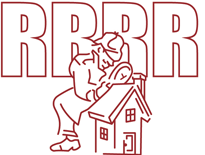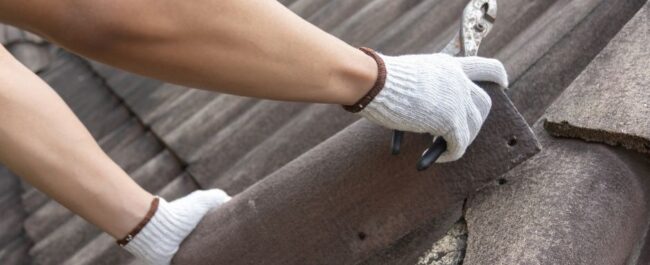The Benefits of Tiled Roof Restoration: Why You Should Do It
Tiled roof restoration offers significant benefits, including cost savings and enhanced durability, compared to full roof replacement. Transform your home with a simple roof fix that saves money and extends your roof’s life! Roof restoration allows you to bring a new lease of life to your roof, without the cost of replacement
What Causes Roof Tile Damage?
Roof tile damage can occur due to various factors, including natural elements, wear and tear, and poor installation. There are certainly some common causes of roof tile damage that we see here in South East Queensland, including:
Weather and Environmental Factors: Large hailstones can impact and crack roof tiles, particularly ceramic or clay tiles, while strong winds can lift, displace, or break roof tiles, especially if they are not properly secured. Prolonged or heavy rain can saturate tiles, making them heavier and prone to damage, especially if they are porous or absorbent.
UV Exposure: Prolonged exposure to sunlight and ultraviolet (UV) rays is a big one here in Brisbane and can cause roof tiles to become brittle and lose their color, reducing their longevity. Along with the UV, repeated temperature fluctuations can cause tiles to expand and contract, leading to stress and potential damage.
Tree Debris: Overhanging branches, falling leaves, or tree limbs can damage roof tiles by impact or by encouraging the growth of moss and algae, which can degrade the tiles over time.
Foot Traffic: Walking on the roof, whether for maintenance or other reasons, can crack or dislodge tiles if not done carefully.
Age and Wear: As roof tiles age, they naturally become more prone to damage. The materials may weaken, and tiles may become more susceptible to weathering and deterioration.
Moss, Algae, and Fungus Growth: The growth of moss, algae, or fungi on roof tiles can damage the surface and create a breeding ground for moisture-related issues. Neglecting routine roof maintenance can allow small issues to worsen over time, potentially causing damage to roof tiles that could have been prevented.
Settlement and Structural Issues: If the building settles or experiences structural issues, the movement can affect the integrity of the roof tiles, leading to damage.
Corrosion: Metal components used in roof systems, such as fasteners or flashings, can corrode over time, affecting the structural integrity of the tiles they support.
Impact of Tiled Roof Damage
The impact of tiled roof damage can be significant and wide-ranging, affecting both the structural integrity of the roof and the overall well-being of your property.
One of the most concerning impacts of roof tile damage is water infiltration. Cracked, dislodged, or missing tiles can allow rainwater to seep into the roofing structure and subsequently into your home or building. This can lead to interior water damage, including ceiling and wall stains, rot, and mould growth.
Roof tile damage can also compromise the structural integrity of your roof. As water infiltrates, it can weaken the roof’s underlying materials, such as the sheathing, rafters, and trusses. Over time, this can result in sagging or even collapse if left unaddressed.
Water infiltration through damaged roof tiles also creates a damp environment making it the perfect environment for mould and mildew growth. Mould can negatively impact indoor air quality and pose health risks to occupants.
In addition to visible water stains on ceilings and walls, roof tile damage can cause more extensive and costly interior damage, such as ruined insulation, drywall, and personal belongings.
And last, but certainly not least, in some cases, failure to maintain a roof in good condition may lead to insurance claim denials or legal disputes, especially if roof damage causes damage to other parts of your property or neighbouring properties.
To minimise the impact of tiled roof damage, it’s crucial to conduct regular inspections, promptly address any issues, and invest in roof maintenance.
The Restoration Process
The initial inspection process for identifying the extent of damage and determining the appropriate restoration plan for a roof is a critical step in ensuring that the necessary repairs or restoration work are carried out effectively.
Your roofing contractor will first conduct a visual inspection from both ground level and on the roof itself, if safe and feasible. They will look for signs of damage, such as missing or dislodged tiles or shingles, cracks, holes, moss or algae growth, as well as debris accumulation. They will also take into consideration the roof’s general condition, including any sagging or uneven areas.
The roofing expert will also examine roof flashings, vents, chimneys, skylights, and other roof penetrations to ensure they are properly sealed and in good condition, inspect the gutters and downpipes for clogs or damage that may affect drainage and Use a moisture metre to check for elevated moisture levels in roofing materials identifying areas with hidden leaks or water damage.
Restoring a tiled roof can offer numerous benefits, making it a worthwhile investment for homeowners and property owners. Roof restoration can significantly extend the lifespan of your existing roof and is often more cost-effective than a complete roof replacement. It allows you to address problems and extend the life of your roof without the expense of tearing off the old roof and installing a new one.
If your South East Queensland home needs a new tile roof, give our friendly and experienced team a call.

